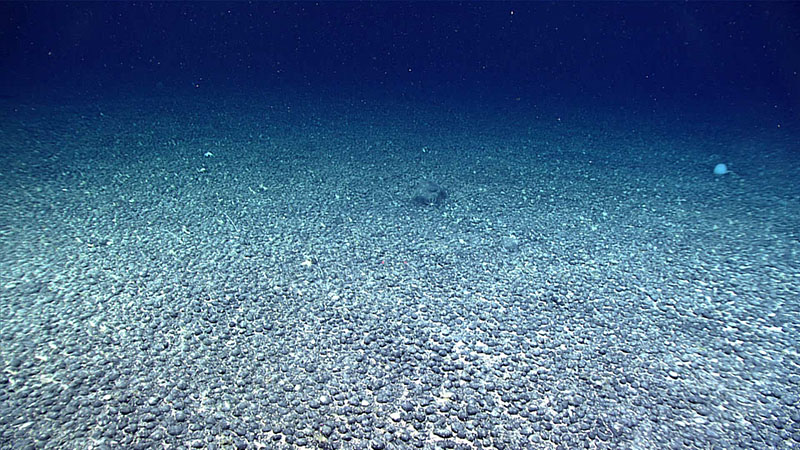

Upon arrival on the seafloor at Gosnold Seamount on Dive 16 of the North Atlantic Stepping Stones expedition, we came across an extensive field of ferromanganese nodules that continued the entire length of the bottom transect. The nodule field was initially thought to be a sediment-free, ferromanganese-coated pavement, but on inspection with remotely operated vehicle Deep Discoverer’s manipulator arm, all of the nodules were found to be loose and sitting within white, partially fine-grained sediment that was biological in origin.